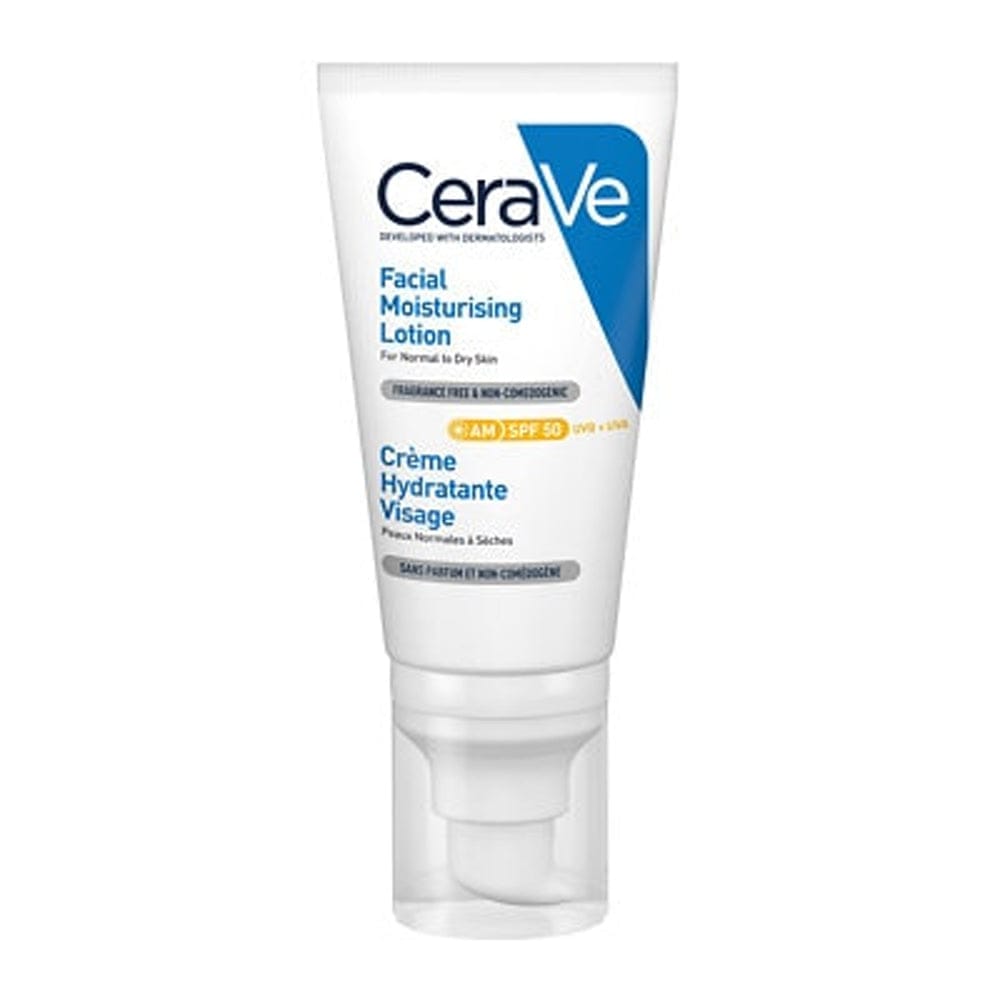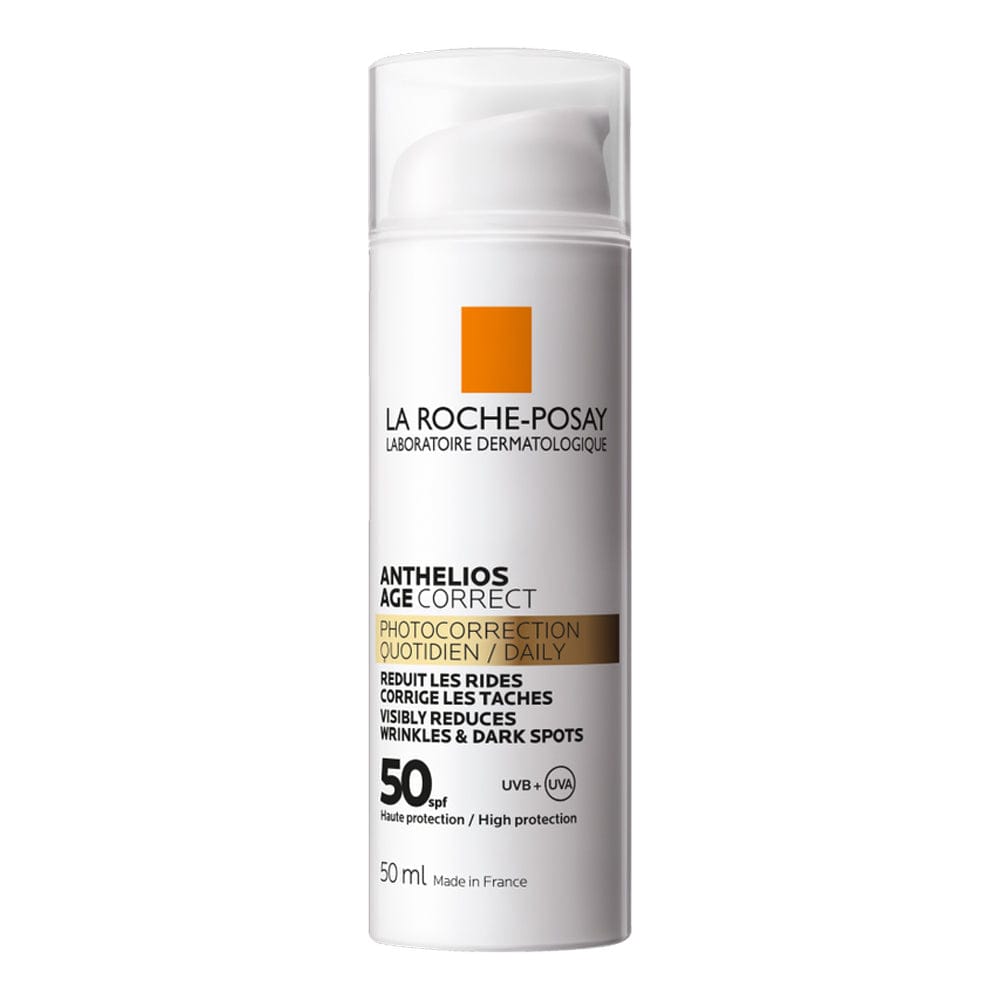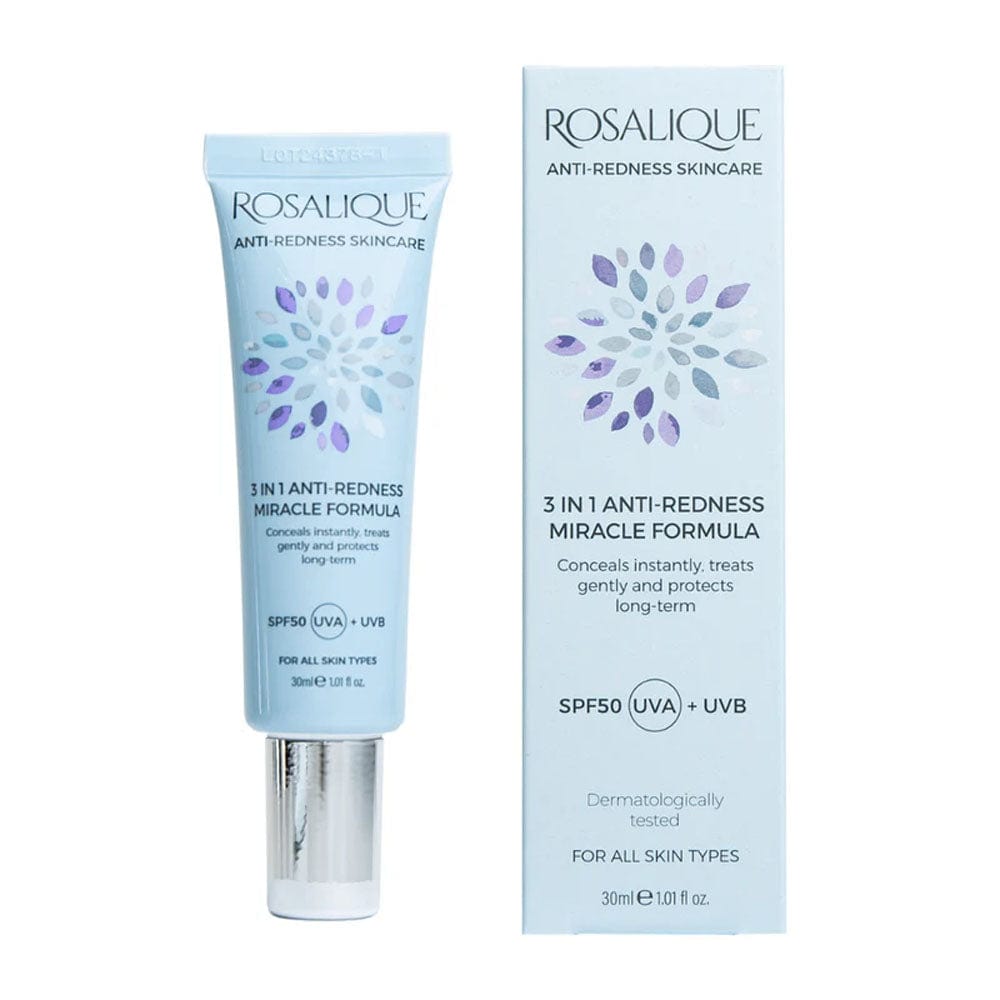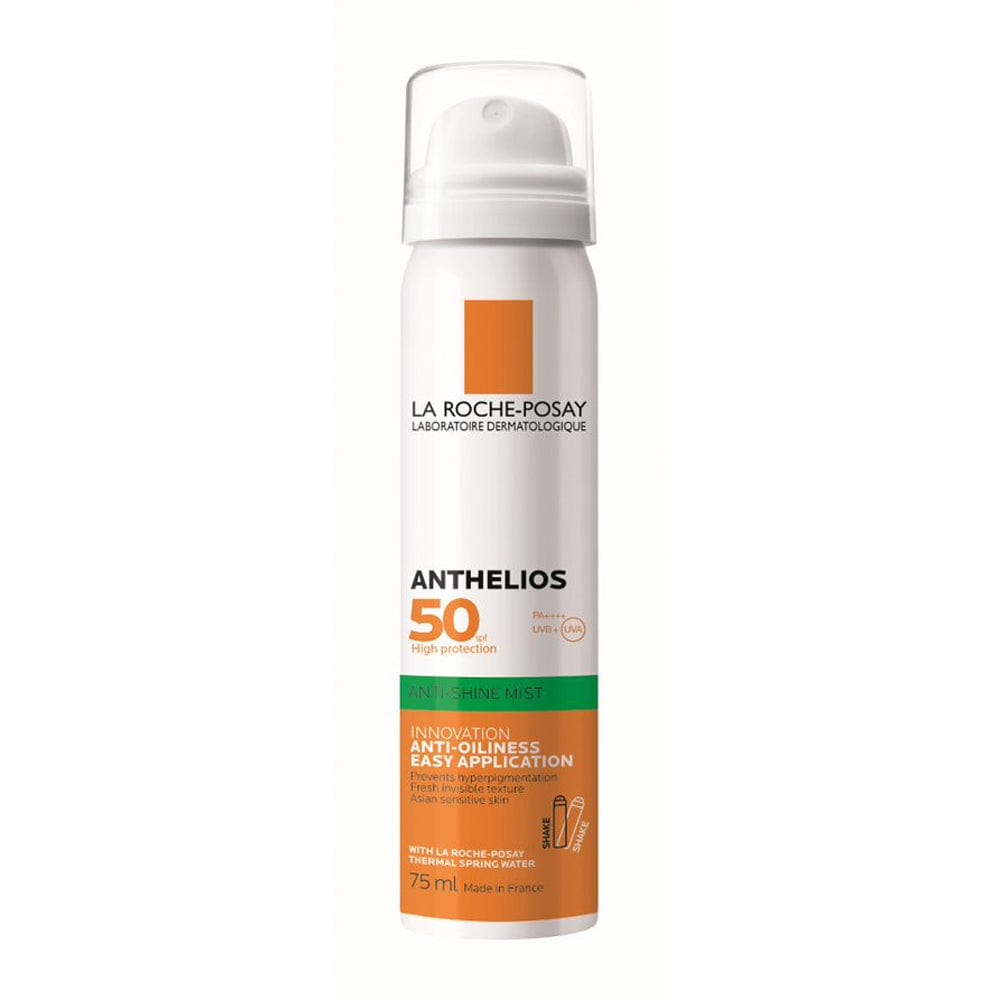When it comes to facial sunscreen, there’s no such thing as being too cautious. Whether you’re commuting, walking the dog, or enjoying a sunny holiday, your face is exposed to UV rays every single day, even when it’s cloudy. UV skin damage is the biggest contributor to premature ageing and fine lines.
Opting for the right sunscreen gives your skin a layer of defence against environmental damage, without compromising on comfort. Even oily skin types and mature skin can enjoy sun protection products without excess oil or breakouts. From hydration and tackling the signs of ageing to fighting free radicals, we’ve rounded up the very best face SPF50 options, whatever your skin type or routine.
Jump straight to the best SPF50 sunscreens
Click on the links below to jump to that section:
- What to SPF ratings mean?
- What are the benefits of SPF50?
- Myths about SPF50
- Dermatologist recommended facial SPF50
- Are there any ingredients to look for/avoid?
Understand sunscreen SPF – is protection linear and is higher factor really better?
Explore the reasons to choose high protection facial SPF
From reapplication to skin tone suitability – debunk common SPF misconceptions
The ultimate protection from top brands like La Roche Posay and CeraVe
Some chemical formulas are better than others, learn which ones are worth it
What Do SPF Ratings Mean?
SPF stands for sun protection factor and tells you approximately how much longer you can stay in the sun compared to without any sunscreen.
Sunscreen blocks a percentage of harmful UV light from reaching your skin, where they can cause damage. A higher level of SPF blocks more ultraviolet light.
- SPF50 blocks 98% of UV rays
- SPF30 blocks 97% of UV rays
- SPF15 blocks 93% of UV rays
At first glance, SPF50 only blocks one percent more UV rays than SPF30; you might be thinking ‘what’s the point of higher SPF?’ However, the percentage change of UV exposure from factor 30 to 50 is actually 33%.
Let me explain:
If the amount of UV exposure while using SPF30, is 3% and with SPF50 it’s 2%. The percentage decrease in UV exposure is 1%, which is a one-third of a reduction in exposure.

Is higher SPF really worth it?
Overall, using a low SPF is far better than using none, but you significantly increase your protection by using high-factor sun protection. There are dozens of options for SPF50 facial sunscreens, so there’s little excuse for skipping factor 50.
Is SPF50 Better Than SPF30 for the Face?
Higher factor sunscreens contain more UV-blocking ingredients, and this can impact the formulation of skincare products. Higher SPF increases the risk of greasiness, pilling or a slight white cast.
Since the skin of the face is more sensitive, oily and clog-prone than the rest of the body, it can be tempting to skip the high SPF to avoid formulation issues. However, sun damage is the primary cause of skin ageing, dark spots, fine lines and collagen decline.
For protecting sensitive skin types and for fighting ageing, finding a good SPF50 is the smartest choice.
What are the Benefits of Facial SPF50?
- SPF50 blocks 98% of harmful UV rays which would otherwise damage the skin, accelerate collagen decline and increase your risk of developing skin cancer.
- High-protection skin care is more forgiving; you’re still well protected if you apply a thinner layer of sun cream.
- You can go slightly longer without reapplying your sunscreen, which is great if you wear makeup or spend for more than a couple of hours outdoors.
- The increased sun protection of higher factors makes a real difference over time. This is essential if you spend a long time in the sun.
- It’s ideal for those with fairer skin, sensitive skin types or individuals with a history of skin cancer.
- High altitudes, regions with higher UV, beaches or snowy mountains call for extra sun protection.
- Sunscreen for lips, face and tattoos should be a minimum sun protection factor of 50 for peace of mind.
- Children’s delicate skin is best protected with factor 50 or higher because it’s very sensitive to burning.
Myths About SPF50
- Is SPF50 twice the protection of SPF25?
- Does higher SPF mean you don’t have to reapply?
- Is all SPF50 is broad spectrum?
- Do darker complexions need factor 50?
- You can’t tan through SPF50
This isn’t quite true, SPF25 blocks 96% of the sun’s UV rays, SFP50 blocks 98%. However, the percentage decrease in UV exposure from using factor 25 to 50 is 50%.
While SPF50 provides better protection, it can still wear off due to sweating, swimming or touching your face. The UV barriers also break down the longer you spend in the sun. Even when wearing factor 50, you should reapply every 2 hours, more if you’re swimming or sweating.
Broad spectrum SPF blocks UVA and UVB rays and unless your factor 50 says it’s broad spectrum, or blocks UVA rays, it might only offer UVB protection. Blue light filters are also great for minimising pigmentation.
Darker skin is richer in melanin – a natural pigment that absorbs UV radiation and adds natural sun protection. But it doesn’t guarantee complete protection, especially if you have a medium skin tone. SPF50 is a safe bet to protect your skin and reduce photodamage.

Your UV exposure is quite low with high-factor sunscreen, so you will tan more slowly. However, tanning slowly is far healthier than foregoing sunscreen for a faster tan - this increases your risk of melanoma, dryness, irritation and sunburn.
Dermatologist Recommended Facial SPF50

1. CeraVe AM Facial Moisturising Lotion SPF50 52ml
The CeraVe AM Facial Moisturising Lotion SPF50 is a multifunctional product that combines effective sun protection with skin-nourishing ingredients for a dewy finish. Its hybrid formulation offers broad-spectrum coverage while supporting skin hydration and barrier function.


“Was told to wear SPF 50 on my dermatitis prone skin. Skin needs a moisturiser too so this product is a must. No more layers of moisturiser and then a SPF 50 cream. My skin accepts this product very well.”

“Lovely light moisturiser with good coverage, doesn't leave white cast from SPF, Will definitely repurchase.”
Chemical filters: Bis-ethylhexyloxyphenol methoxyphenyl triazine, Ethylhexyl salicylate, Butyl methoxydibenzoylmethane, Ethylhexyl triazone.
Mineral Filter: Zinc oxide.
| Key benefits: |
|---|
|
| Possible drawbacks:: |
|
2. La Roche-Posay Anthelios Age Correct SPF50+ Cream 50ml
The La Roche-Posay Anthelios Age Correct SPF50+ Cream is a multifaceted product, with rave reviews, that combines high-level sun protection with anti-ageing benefits. Its formulation addresses hydration, pigmentation, and environmental protection, making it a comprehensive choice for your daily facial sunscreen.


“A fabulous factor 50, very moisturising and a good base under makeup. I would highly recommend this product”

“Use this every day. Lovely and smooth. Not greasy. Gives great protection”
| Key Benefits: |
|---|
|
| Possible drawbacks: |
|
Suitable For: Mature, combination and dry skin
3. La Roche-Posay Cicaplast Baume B5+ SPF50 40ml
The La Roche-Posay Cicaplast Baume B5+ SPF50 is a multifunctional balm that combines skin barrier repair with high-level sun protection. Its key ingredients are particularly beneficial for sensitive or irritated skin, offering soothing and protective properties.

“High factor and helps repair damaged skin and reduce scaring”

“Great for sensitive skin, helped with rosacea, the spf 50 is great. I couldn’t be without it.”
Chemical filters: Octocrylene, Butyl methoxydibenzoylmethane, Ethylhexyl triazone, Homosalate, ethylhexyl salicylate, Bis-ethylhexyloxyphenol, Methoxyphenyl triazine, Phenylbenzimidazole sulfonic acid, Ehoxyphenyl triazine, Drometrizole trisiloxane.
| Key Ingredients: |
|---|
|
| Possible drawbacks: |
|
Suitable For: Dry, sensitive, acne, allergy-prone and combination skin types
4. Rosalique 3 in 1 Anti Redness Miracle Formula SPF50 30ml
The Rosalique 3 in 1 Anti-Redness Miracle Formula SPF50 is a multifunctional tinted sunscreen that combines sun protection, redness correction, and skin-soothing benefits. Its blend of chemical and mineral sunscreens ensures broad-spectrum coverage, while active ingredients address redness and hydration.


“Definitely loving this, the effect is immediate and it makes my make up look so much better on. Highly recommend”

“Within a week redness was reduced. Love the results.”
| Key Ingredients: |
|---|
|
| Possible drawbacks: |
|
Suitable For: Sensitive or acne-prone skin, rosacea, pigmentation or uneven skin tone
5. La Roche-Posay Anthelios Invisible Anti-Shine Face Mist SPF50+
The La Roche-Posay Anthelios Invisible Anti-Shine Face Mist SPF50+ is a convenient and effective sun protection solution, especially suited for oily and blemish-prone skin. Its mattifying properties and invisible fluid spray make it ideal for on-the-go application and reapplication over makeup.


“The best Sunscreen for your face!!! So light yet effective. Doesn't clog pores. Perfect over make up.”

“Love this product, use it on face and scalp”
Chemical filters: Homosalate, Octocrylene, Ethylhexyl salicylate, Butyl methoxydibenzoylmethane (Avobenzone), Drometrizole trisiloxane, Ethylhexyl triazone.
| Key benefits: |
|---|
|
| Possible drawbacks: |
|
Perfect For: Reapplying throughout the day, oily and clog-prone skin
Are there any ingredients to look for/avoid?
While chemical sunscreens are great for minimising UV exposure without a white cast and there are so many versatile formulations, there are some downsides that may not be worth the risk in some cases.
- Some chemicals are hormone disruptors, including some chemical sunscreens.
- Chemical sunscreens can often harm marine life so should be avoided when swimming.
- Some chemical sunscreens aren’t very photostable, so may not be worth it.
Here are some to look out for:
- Oxybenzone
- Octinoxate
- Homosalate
- Octocrylene
Opting for mineral sunscreen is one way to reduce the chemical load of your skincare routine
Fragrance-free options are usually best for sensitive skin, and you could go one step further by choosing an alcohol-free formula. Preservatives and parabens are also linked to less desirable side effects, so consider avoiding these.
Frequently Asked Questions:
Should you reapply facial SPF50?
Yes — even SPF50 should be reapplied every 2 hours, especially if you’re outside, sweating, or after towel drying. Sunscreen can break down or rub off during the day, so reapplying ensures continued protection.
Should you apply SPF50 before or after moisturiser?
Sunscreen should be applied after moisturiser as the final step in your skincare routine. Think of it as the top protective layer that seals everything in and shields your skin from UV damage. You can also use a moisturiser with SPF for convenience.
Can you wear SPF50 with makeup?
SPF50 can be worn under makeup — just let it absorb fully before applying foundation or powder. You can also top up throughout the day using SPF setting sprays, powders, or sticks without disturbing your makeup.
What sunscreen is best for sensitive skin?
For sensitive skin, mineral (physical) sunscreens with zinc oxide or titanium dioxide are ideal as they’re less likely to cause irritation. Look for fragrance-free, alcohol-free, and hypoallergenic formulas for extra comfort.
Do I need a separate sunscreen for my body and face?
Not necessarily, but lightweight facial sunscreens are usually formulated to be non-comedogenic and less greasy, making them better-suited for daily wear on delicate facial skin. Body sunscreens tend to be richer or more affordable in larger sizes, so some people prefer separate products for comfort and practicality.
Do I need to wash my face every time I apply sunscreen?
No, you don’t need to wash your face every time you reapply sunscreen — just make sure to cleanse at the end of the day. If you’ve been sweating heavily or have applied a lot of product buildup, rinsing before reapplication could be a good idea.


